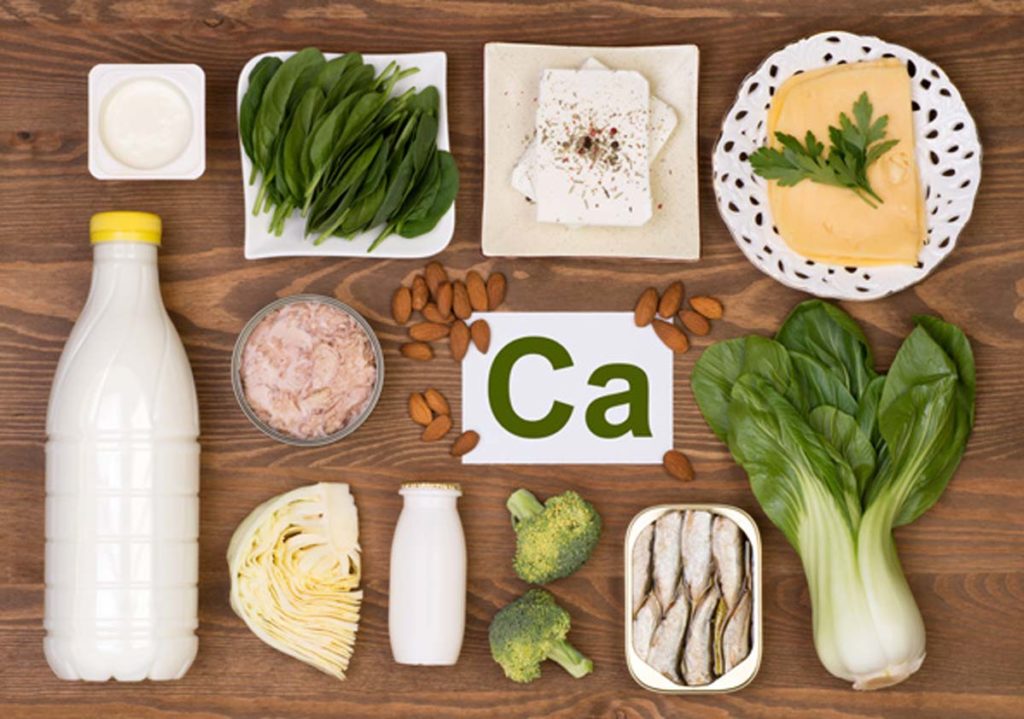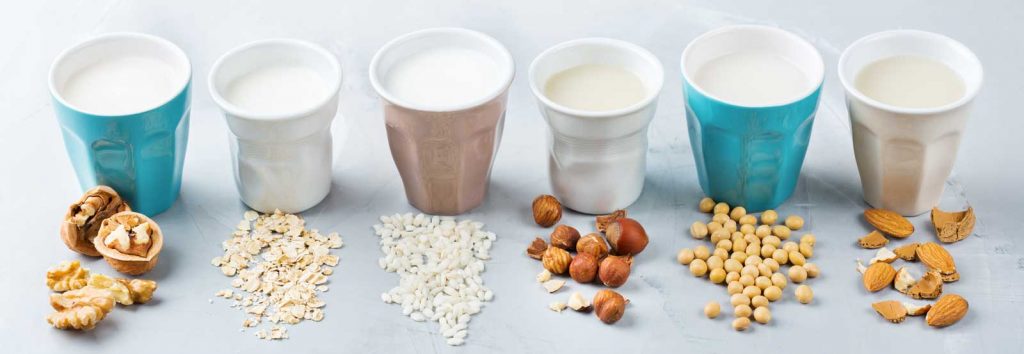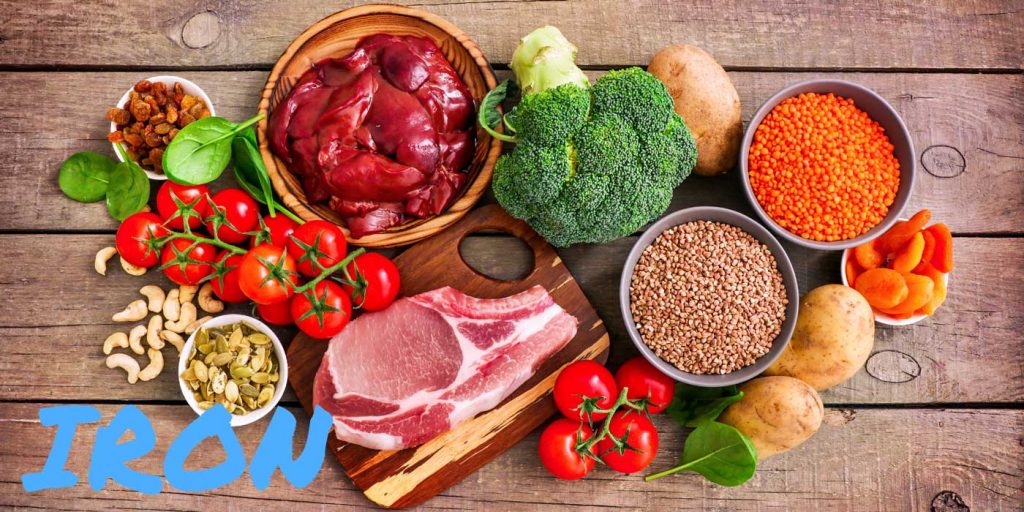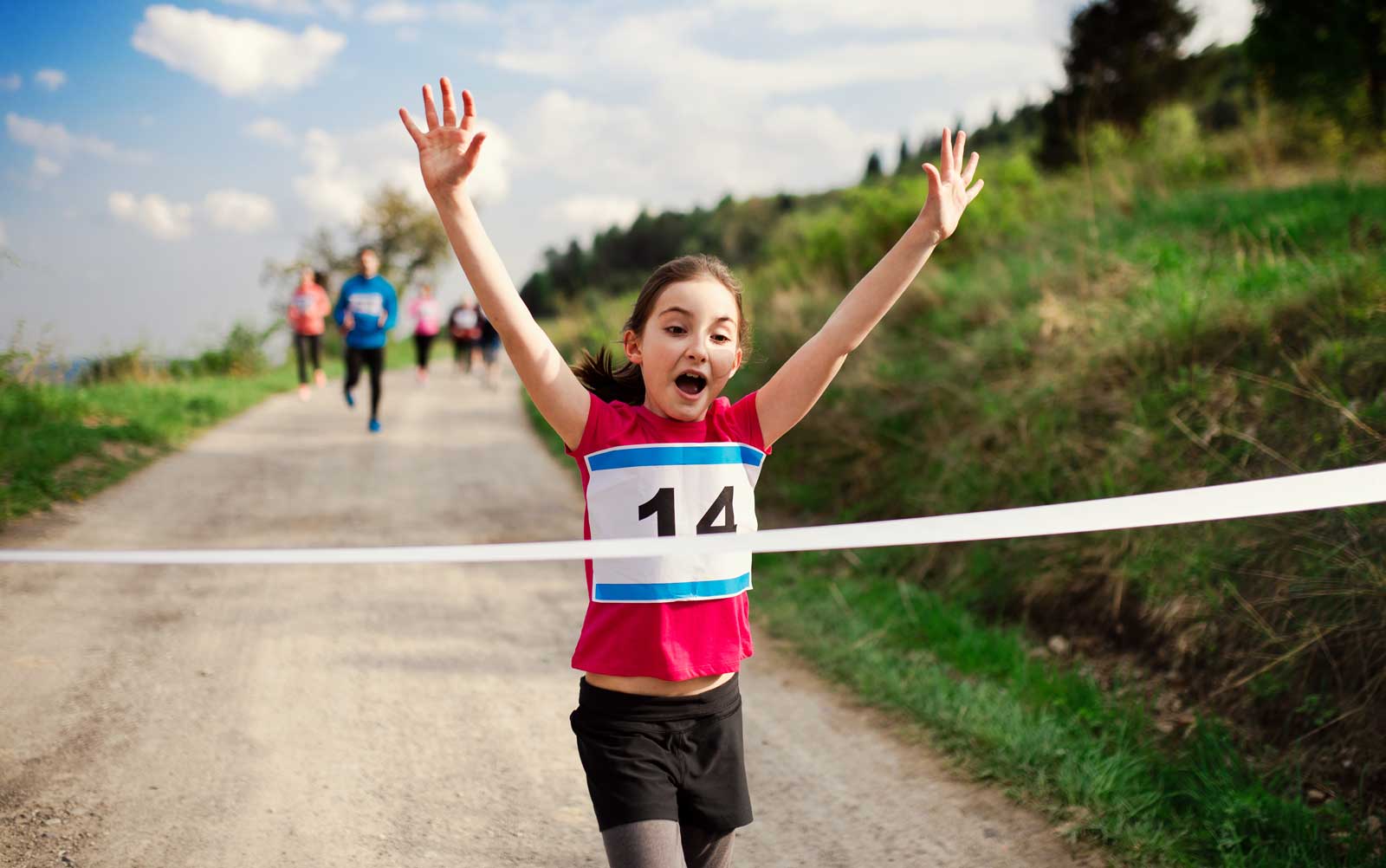Strategy #4: Micronutrients Matter
For overall health, growth, development, and athletic performance, many vitamins and minerals are required. For young athletes, significant attention should be made to calcium, vitamin D, and iron intake.

Calcium and Vitamin D
Calcium and vitamin D are critical for bone growth and development and work synergistically. Vitamin D aids in the absorption of calcium.1 Recommendations for calcium and vitamin vary. Current recommendations for calcium is 1000 mg/day for 4 to 8 years and 1300 mg/day for ages 9 to 18 years.1 Calcium is found in various foods and beverages, including dairy products like yogurt, cheese, milk, tofu, salmon, spinach, and fortified juices and cereals.
Vitamin D plays a role in bone health and is associated with immune function, muscle function, and inadequate intake is linked to increased risk of osteoporosis, stress fractures, muscle pain and weakness, and impaired immune function.2 A majority of our vitamin D needs are met through UVB exposure through sunlight. Current recommendations suggest that 600 IU/day for 4 to 18 years; however, several factors can influence vitamin D levels that may require correction through supplementation to maintain optimal performance and bone health. Factors that can affect vitamin D status include geographic location, race, protective clothing and sunscreen, body composition, and gastrointestinal disorders.2
Sources of vitamin D beyond sun exposure include salmon, UV-exposed mushrooms, eggs, and fortified foods and beverages such as milk and some juices.
A Case for Dairy
There has been an absolute explosion in the dairy aisle that you can witness at almost any grocery store. The evolution of dairy-alternatives has grown from the humble beginnings of soy and almond milk to regulars of oat, coconut, cashew, and other lactose-free options filling out the shelves almost every grocery store.

We understand that those facing lactose intolerance or allergies to dairy proteins are challenging. While dairy alternatives are available for this population, not all milk alternatives stack up to cow’s milk. When it comes to calcium, protein, growth, and their role in post-exercise recovery, regular milk wins every time.
A recent study found increases in height when children drank milk. However, compared to non-dairy milk such as soy, almond, or rice, children experienced a lower height.3 The combination of calcium, vitamin D, and protein in dairy products like milk and yogurt, and its consumption is considered a significant predictor of peak height velocity and adult height.4 Dairy proteins are also regarded as high-quality protein sources for muscle protein synthesis and are considered great post-exercise recovery.5
If unable to consume dairy and dairy products, look for alternatives that provide comparable amounts of protein and are fortified with calcium and vitamin D.
If you want to push the boundaries of cow’s milk alternatives – give goat’s milk a try. It does contain lactose and backs around 9-10 g of protein, 32% daily value of calcium, and 31% daily value of vitamin D.
Iron
Iron deficiency or depletion is common in adolescents due to increased iron needs for hemoglobin production, increased blood volume, and muscle mass as part of proper growth and maturation.6 Iron requirements increase after the onset of menses in females.
Deficiencies in iron among athletes can lead to diminished performance, especially in athletes participating in higher aerobic demand sports.6,7 The recommended intake of iron for males and females ages 4-8 years is 10 mg and ages 9 to 14 years is 8 mg. Males and females ages 14 to 18 years should consume 11 mg and 15 mg, respectively.8
Sources of iron include red meat, beans, dark leafy green vegetables, dark chocolate (>45%), and fortified foods such as breakfast cereals. Dietary iron has two forms: heme and nonheme. Heme iron is more bioavailable, easily absorbed than nonheme iron. To enhance the absorption of nonheme iron, pair with food sources rich in vitamin C.9

Athletes (especially female) following vegetarian/vegan diets and competing in endurance events should monitor their iron status and ensure adequate iron intake from food and consider supplementation.
For young athletes, they should aim to:
- Consume 1000-1300 mg of calcium
- Minimum 600 IU of Vitamin D3, consider supplementation if at risk for Vitamin D deficiency
- Meet iron intake recommendations and monitor if at risk for iron deficiency and/or iron depletion
- 4-8 years old = 10 mg
- 9-13 years old = 18 mg
- 14-18 years old = 11 mg for males and 15 mg for females
References
- Retrieved from https://ods.od.nih.gov/factsheets/Calcium-HealthProfessional/
- Owens, D. J., Allison, R., & Close, G. L. (2018). Vitamin D and the Athlete: Current Perspectives and New Challenges. Sports medicine (Auckland, N.Z.), 48(Suppl 1), 3–16. https://doi.org/10.1007/s40279-017-0841-9
- Morency, M. E., Birken, C. S., Lebovic, G., Chen, Y., L’Abbé, M., Lee, G. J., Maguire, J. L., & TARGet Kids! Collaboration (2017). Association between noncow milk beverage consumption and childhood height. The American journal of clinical nutrition, 106(2), 597–602. 2009, 18, 1881–1887.
- Orr, J.B. (2009). “Influence of amount of milk consumption on the rate of growth of school children.” British Medical Journal 1.3499 (1928): 140.
- Volterman, KA., Obeid, J., Wilk, B., & Timmons, BW. (2014). Effects of postexercise milk consumption on whole body protein balance in youth.Journal of Applied Physiology, 117, 1165-1169.
- Smith, JEW., Holmes, M.E., & McAllister, MJ. (2015). Nutritional considerations for performance in young atheltes. Journal of Sports Medicine, http://dx.doi.org/10.1155/2015/734649.
- Malczewska, G. Raczynski, and R. Stupnicki, “Iron status in female endurance athletes and in non-athletes,” International Journal of Sport Nutrition and Exercise Metabolism, vol. 10, no. 3, pp. 260–276, 2000.
- Retrieved from: https://ods.od.nih.gov/factsheets/Iron-HealthProfessional/#:~:text=The%20average%20daily%20iron%20intake,mg%2Fday%20%5B5%5D.
- D. Cook and M. B. Reddy, “Effect of ascorbic acid intake on nonheme-iron absorption from a complete diet,” The American Journal of Clinical Nutrition, vol. 73, no. 1, pp. 93–98, 2001.
